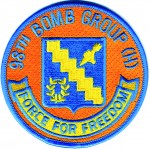History
98th Bomb Wing (M): 1954-1964. B-47s and KC-97s.

All of the base support functions were under the command of the 98th Air Base Group when 98th Bomb Wing personnel began arriving in early fall of 1954, but the Air Base Group was deactivated in October and the 818th Air Division was organized as specified by Strategic Air Command (SAC) regulations for dual wing bases under SAC. The 307th Bombardment Wing (M) was also assigned to Lincoln AFB for approximately the same period of time as the 98th.
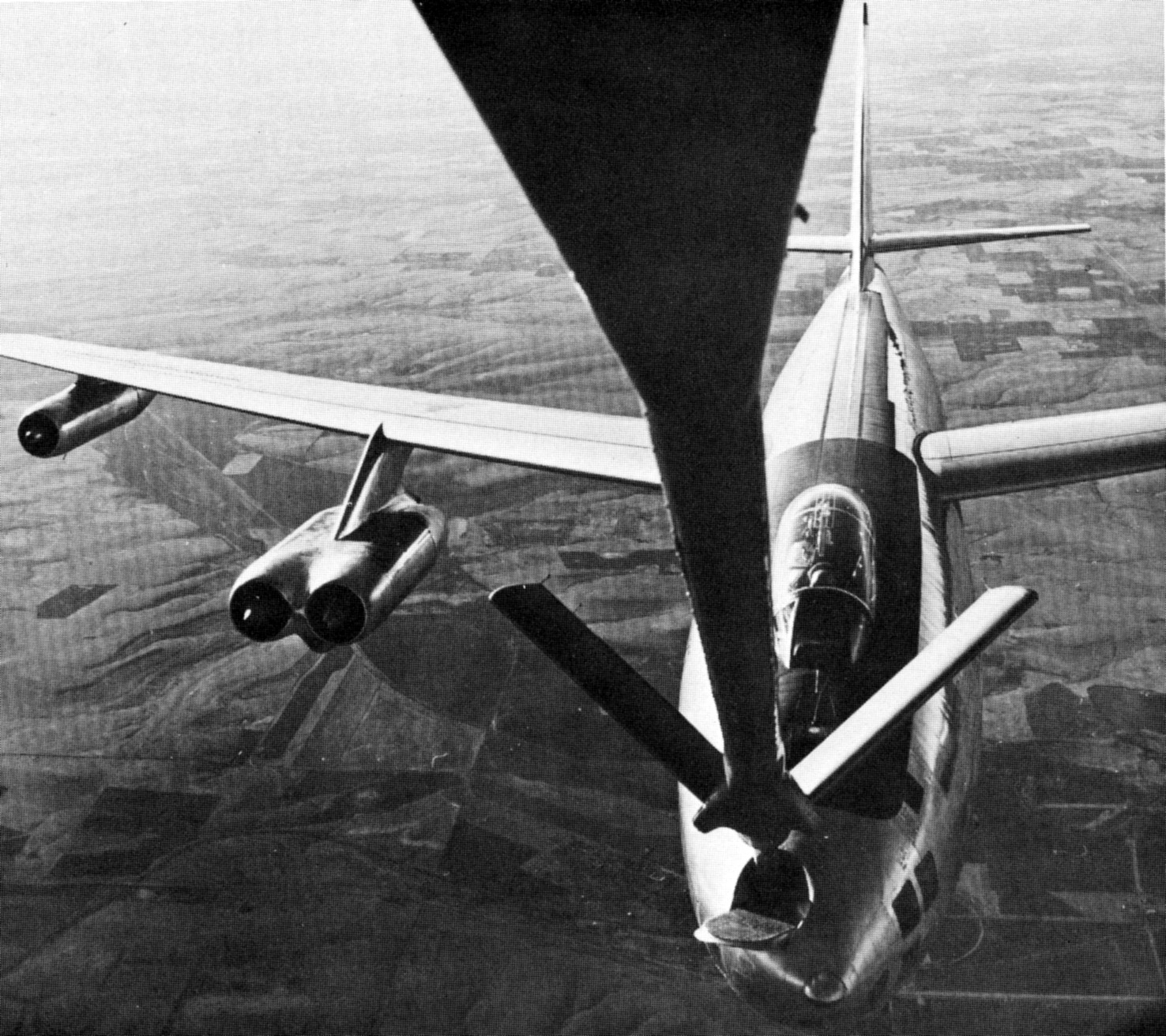 |
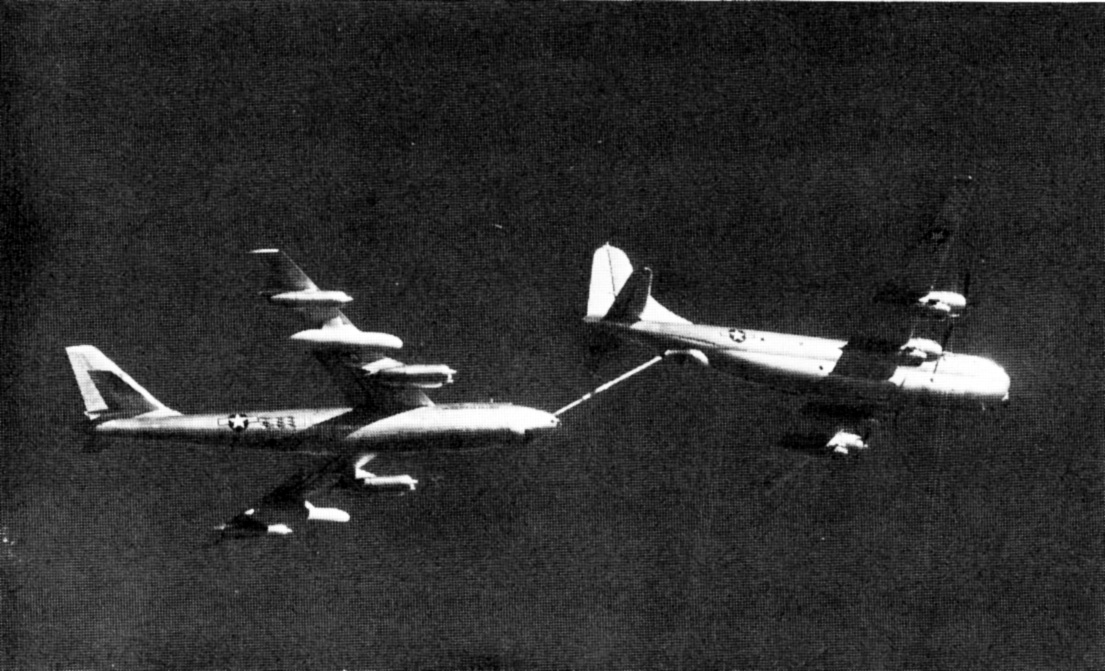 |
Colonel William F. Coleman assumed command of the 98th in November 1954 and B-47 bombers began arriving in January 1955. Due to the rapidly escalating “Cold War” with the Soviet Union and China, the wing undertook an intensive training program to achieve combat ready status as quickly as possible. Following a “graduation” mission in July 1955, the wing was declared ready to execute its war time mission.
SAC units were realigned in late summer 1955 and the 98th was removed from the control of Fifteenth Air Force and place under Eighth Air Force at Westover AFB in Massachusetts. Under 8th AF, the wing continued to fly and train in bomber stream operations and proved its proficiency on October 10, 1955 with a successful “Post Hole” SAC evaluation mission flown against a simulated target at Rylander, Wisconsin.
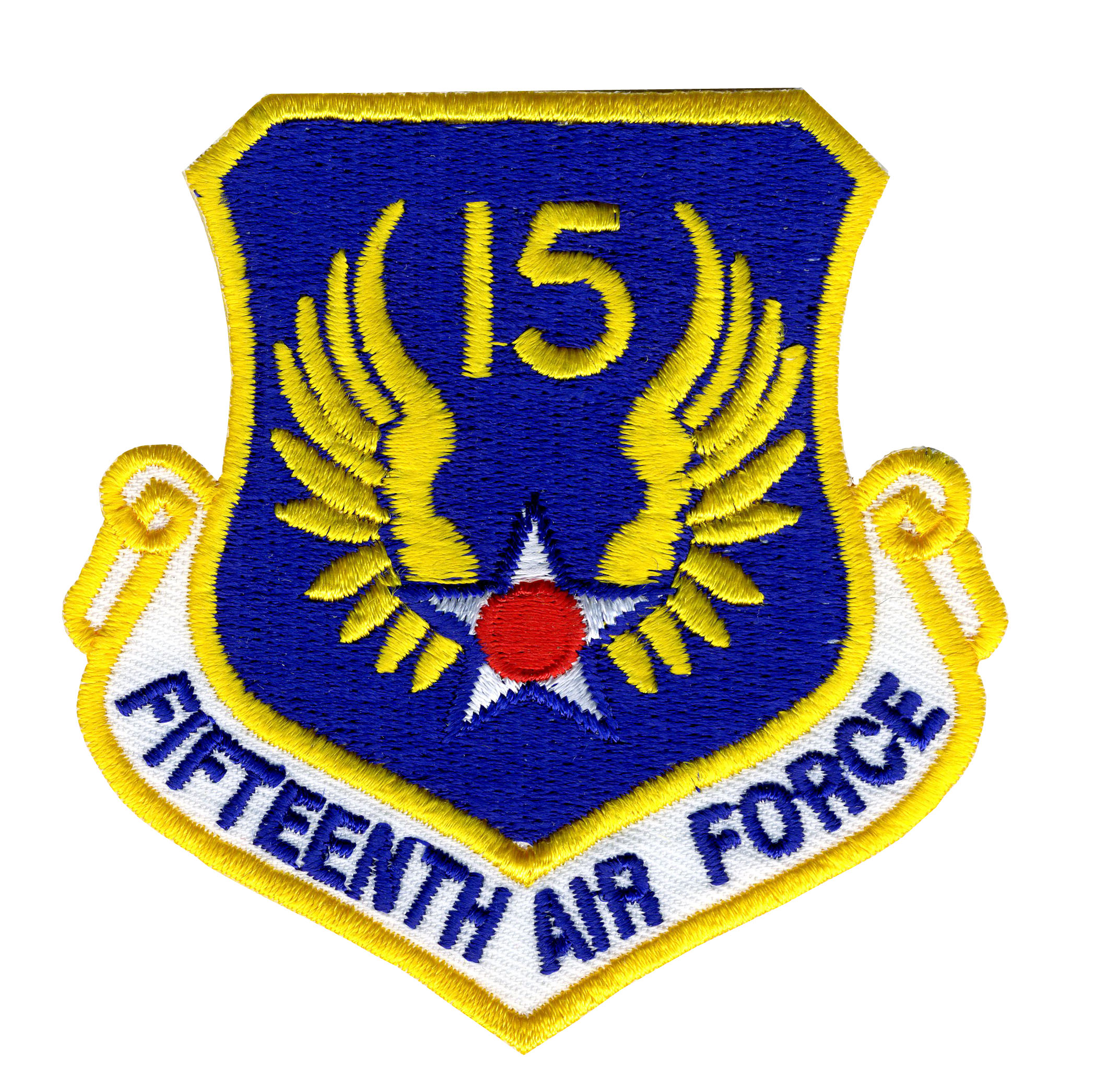 |
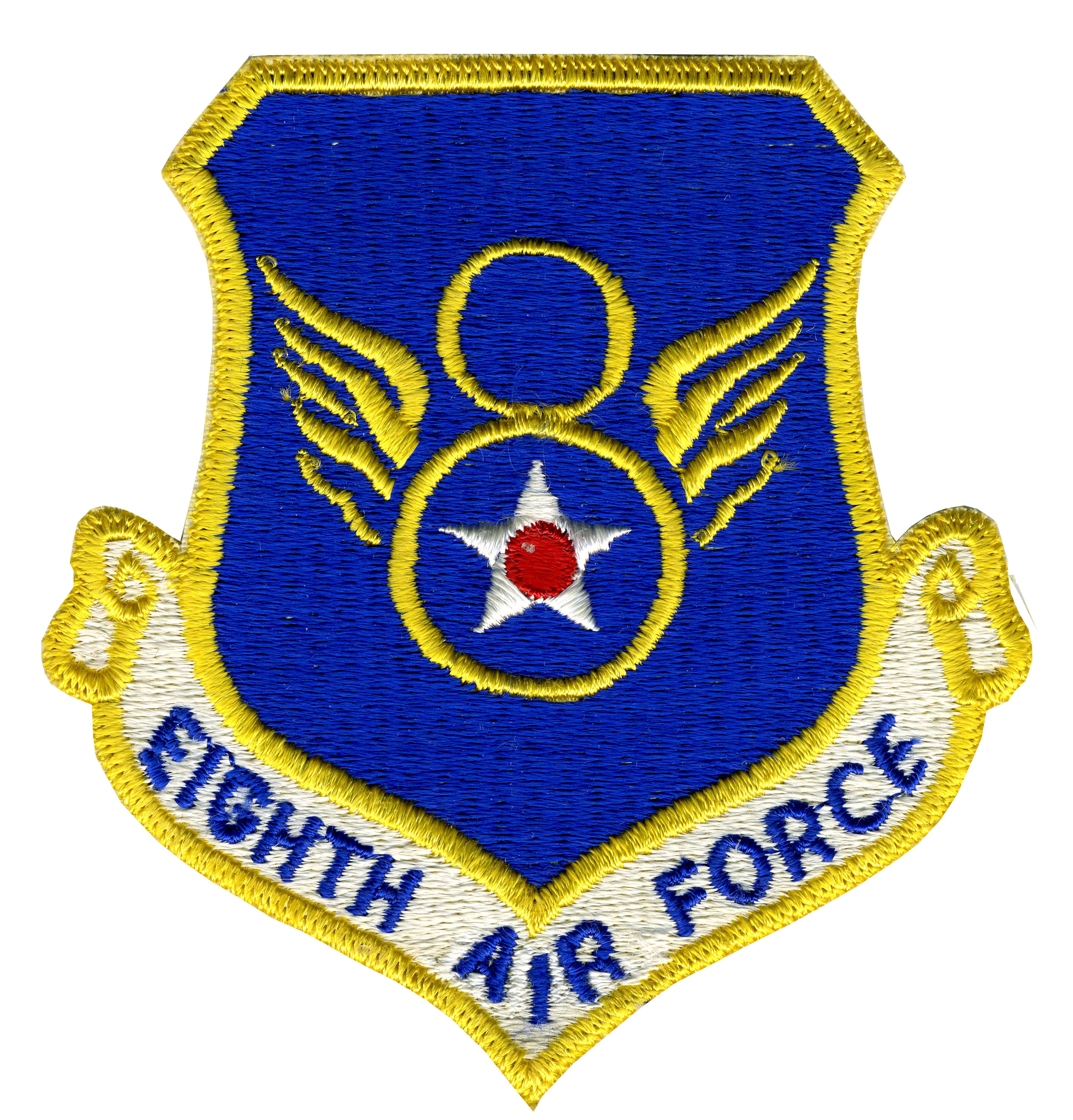 |
On November 6, 1955, the 98th deployed to Lakenheath RAFB for a 90-day rotation. The wing was tasked for another deployment when crew and aircraft of the 98th ARS were deployed to Harmon AFB in Newfoundland on December 27, 1956. While at Harmon the aircraft and crews were on constant alert in support of the SAC war plan. The squadron was relieved of the duty on March 14, 1957, and was replaced by another refueling unit. The highly successful accomplishment of the deployment in brutal winter time conditions was typical of the professionalism of the 98th ARS.
On January 1, 1959 the 98th was placed under the control of Second Air Force and continued to prove its combat readiness through numerous Second AF competitions, evaluations, and higher headquarters’ inspections.
 |
 |
In addition to the 98th ARS, the wing included: the 343rd, 344th, 345th and 415th Bomb Squadrons; the Headquarters, Armament & Electronics, Field Maintenance, and Organizational Maintenance Squadrons.
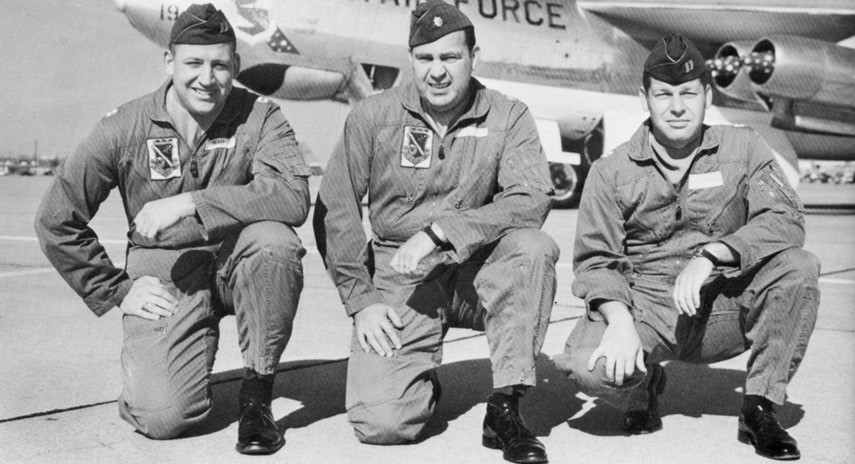 Crew S-52, Capt. Carl Drake, Navigator, Lt. Col. Raymond Palmer, Aircraft Commander; Capt. Jerry Lanning, Co-Pilot. Stationed at Lincoln AFB, NE, 1963-1965. |
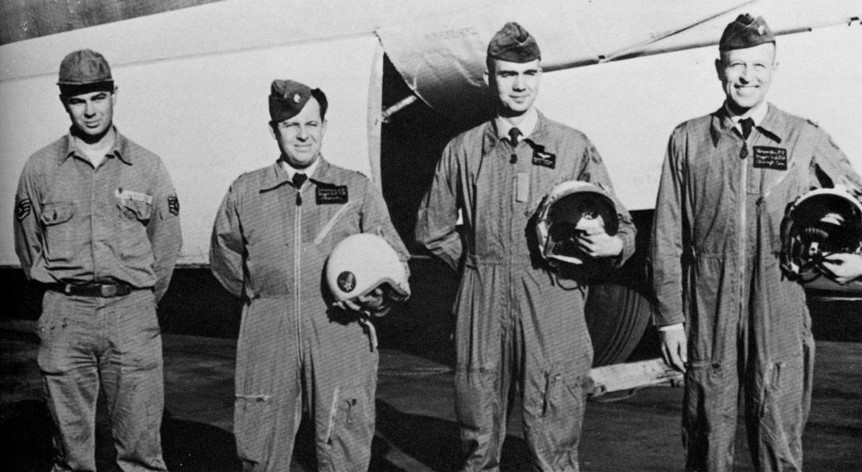 1955 Winning Crew, B-47, Paul Kalois, Crew Chief; Samuel D. Wareham, Bombardier/Navigator; Robert Knoldel, Co-Pilot; Paul Haverton, Pilot |
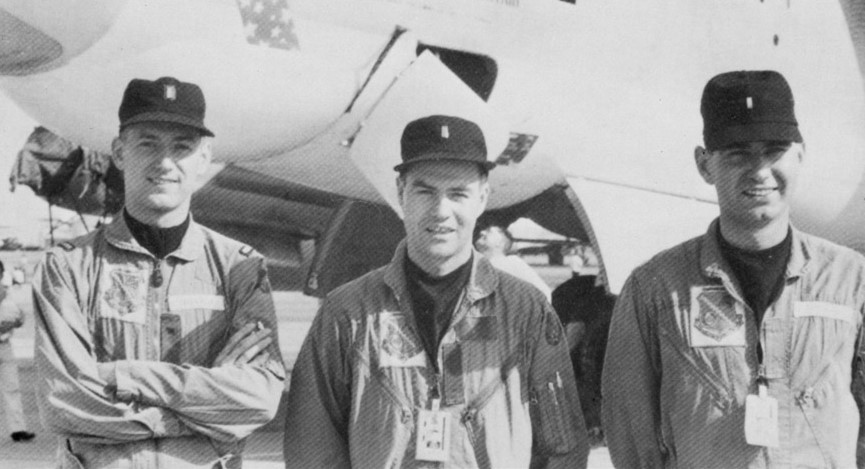 December 1959, B-47 crew at Lincoln AFB, NE. Lt. Richard Boyer, Co-Pilot; 1st Lt. James H. Pederson, Aircraft Commander; 1st Lt. Samuel Trabun, Navigator |
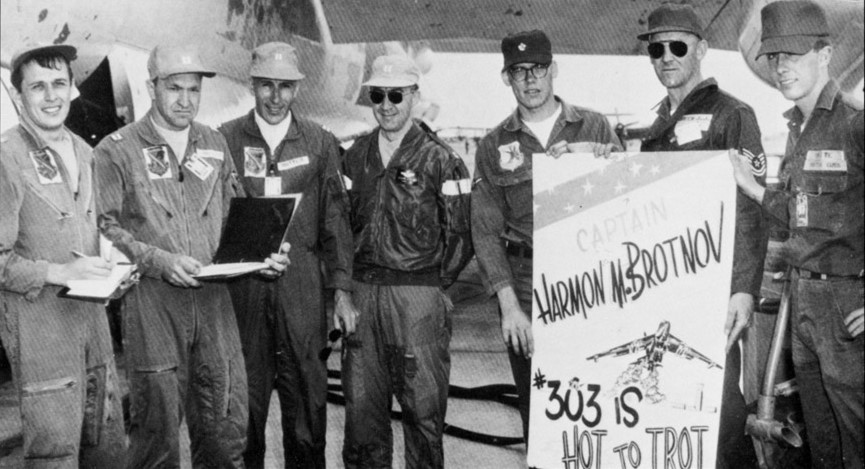 April 1961. Crew going for a consecutive on time takeoff record. 1st Lt. San Smith, Co-Pilot; Capt. Harmon Brotnow, Aircraft Commander; Capt. Chuck Rutter, Navigator/Bombardier; Capt. John Nelson, Wing Intelligence; A/3C Conklin, Assistant Crew Chief; A/1C White, Assistant Crew Chief |
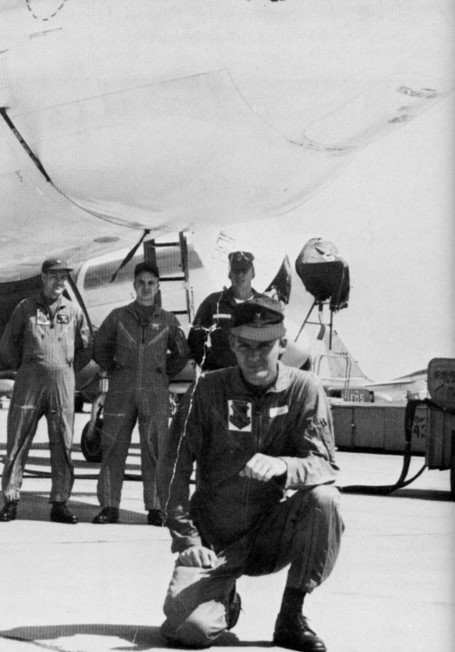 Crew E-84, Lincoln AFB, NE, July 1963. Front, Lt. Allen W. Cook, Navigator. Back, Capt. James H. Pederson, Aircraft Commander; Lt. Walter J. Delaney, Jr., Co-Pilot; T/Sgt. Curtis S. Johnson, Crew Chief |
The 98th ARS was deployed to Lajes Air Base, Azores in September 1962, and was committed to the air operations connected with the Cuban Missile Crisis in October 1962. Their location on the sea lanes the Russians were using to transport missiles to Cuba placed the squadron in a critical role in the detection and subsequent quarantine of the shipment of Soviet missiles to the island.
On April 15, 1963 the 98th ARS was deactivated after a very event filled nine years of operations. One of the highlights of the squadron’s accomplishments was 64,000 hours of flying time without the loss of a single aircraft or man.
On October 7, 1957 the Soviet Union successfully launched a satellite into low earth orbit. “Sputnick” as it was dubbed, surprised and frightened the United States and its allies. To counter this new development the U.S. undertook a number of steps to increase its ability to respond to an attack from the USSR. For SAC units, this entailed the establishment of a ground alert posture with bombers loaded with nuclear weapons, and with crews ready to respond quickly. Bombers were on alert both at their home bases and at “reflex” bases in Europe, Africa and the Pacific. From the time the alert klaxon sounded until the aircraft was airborne was a maximum of 15 minutes. For SAC crews, alert tours of seven days and reflex tours of three-plus weeks became a way of life which lasted until the “Cold War” was won in 1991 with the collapse of the USSR.
